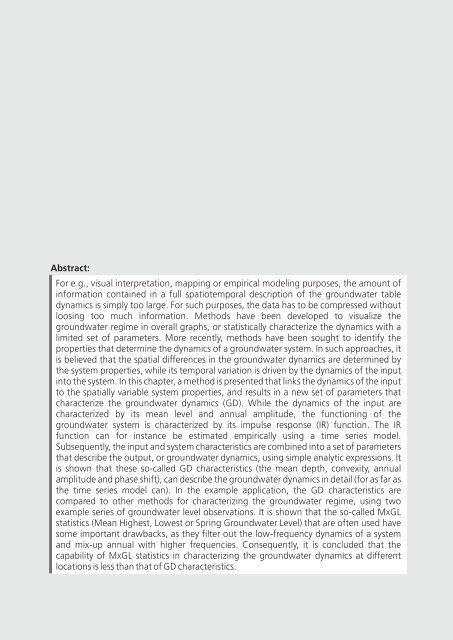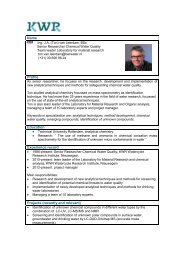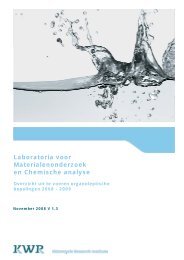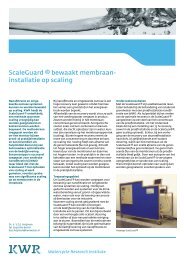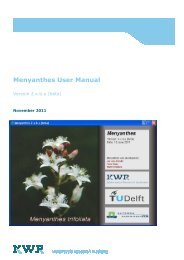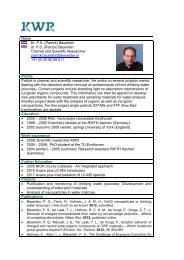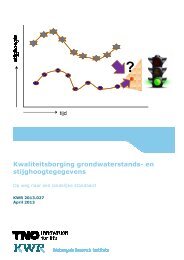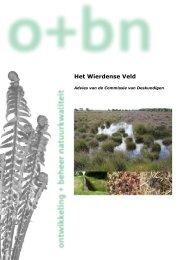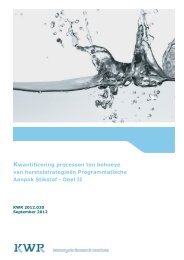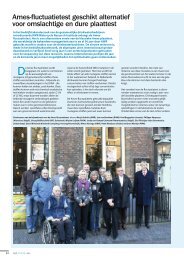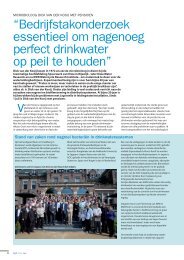Jos_von_Asmuth_Thesis.pdf - repository
Jos_von_Asmuth_Thesis.pdf - repository
Jos_von_Asmuth_Thesis.pdf - repository
You also want an ePaper? Increase the reach of your titles
YUMPU automatically turns print PDFs into web optimized ePapers that Google loves.
`Ü~éíÉê=S=6NPM=Abstract:For e.g., visual interpretation, mapping or empirical modeling purposes, the amount ofinformation contained in a full spatiotemporal description of the groundwater tabledynamics is simply too large. For such purposes, the data has to be compressed withoutloosing too much information. Methods have been developed to visualize thegroundwater regime in overall graphs, or statistically characterize the dynamics with alimited set of parameters. More recently, methods have been sought to identify theproperties that determine the dynamics of a groundwater system. In such approaches, itis believed that the spatial differences in the groundwater dynamics are determined bythe system properties, while its temporal variation is driven by the dynamics of the inputinto the system. In this chapter, a method is presented that links the dynamics of the inputto the spatially variable system properties, and results in a new set of parameters thatcharacterize the groundwater dynamics (GD). While the dynamics of the input arecharacterized by its mean level and annual amplitude, the functioning of thegroundwater system is characterized by its impulse response (IR) function. The IRfunction can for instance be estimated empirically using a time series model.Subsequently, the input and system characteristics are combined into a set of parametersthat describe the output, or groundwater dynamics, using simple analytic expressions. Itis shown that these so-called GD characteristics (the mean depth, convexity, annualamplitude and phase shift), can describe the groundwater dynamics in detail (for as far asthe time series model can). In the example application, the GD characteristics arecompared to other methods for characterizing the groundwater regime, using twoexample series of groundwater level observations. It is shown that the so-called MxGLstatistics (Mean Highest, Lowest or Spring Groundwater Level) that are often used havesome important drawbacks, as they filter out the low-frequency dynamics of a systemand mix-up annual with higher frequencies. Consequently, it is concluded that thecapability of MxGL statistics in characterizing the groundwater dynamics at differentlocations is less than that of GD characteristics...…………………………………………………………………………………………….….


